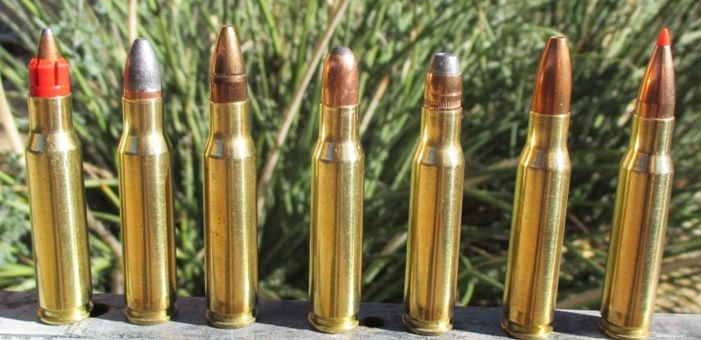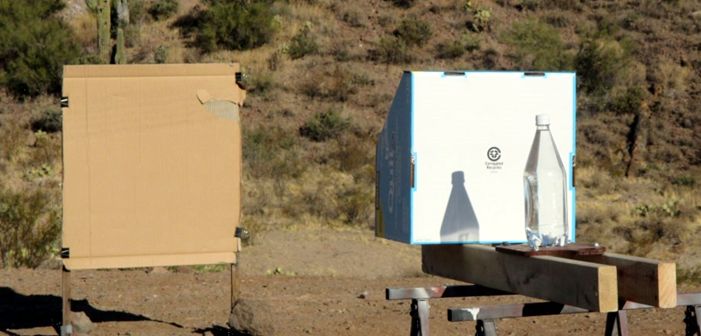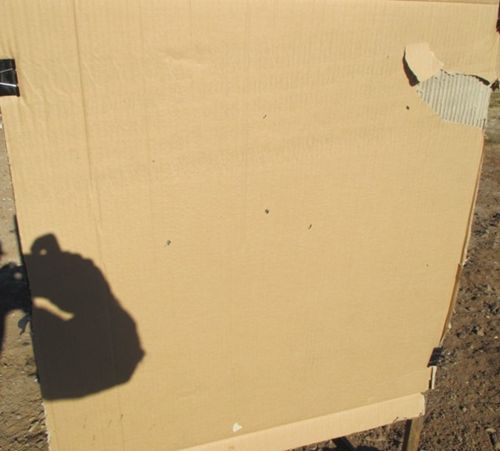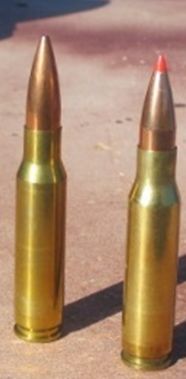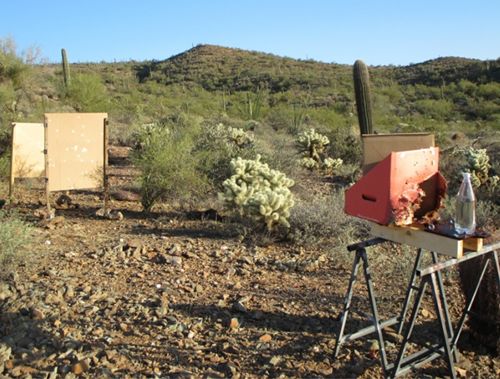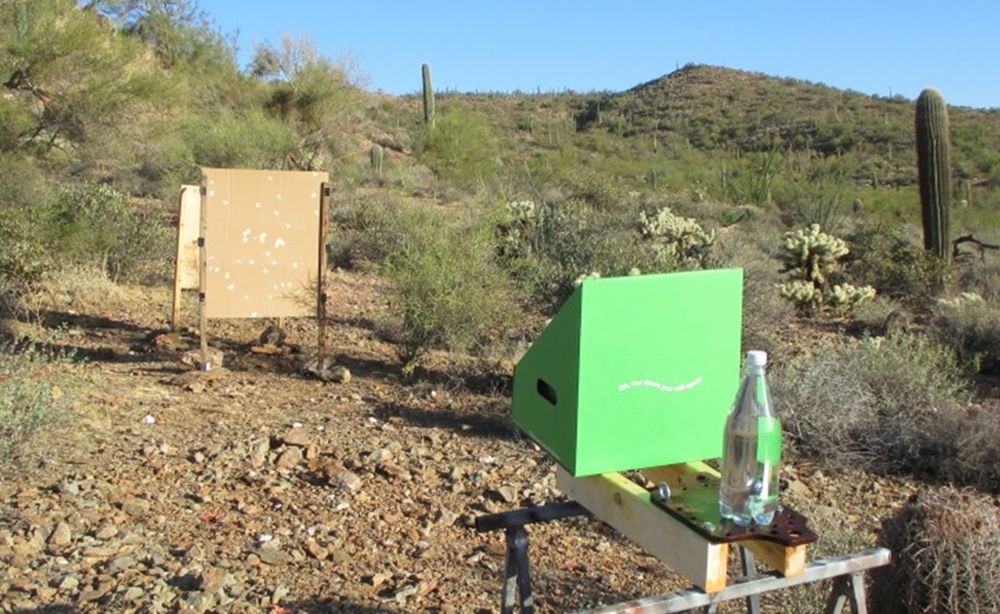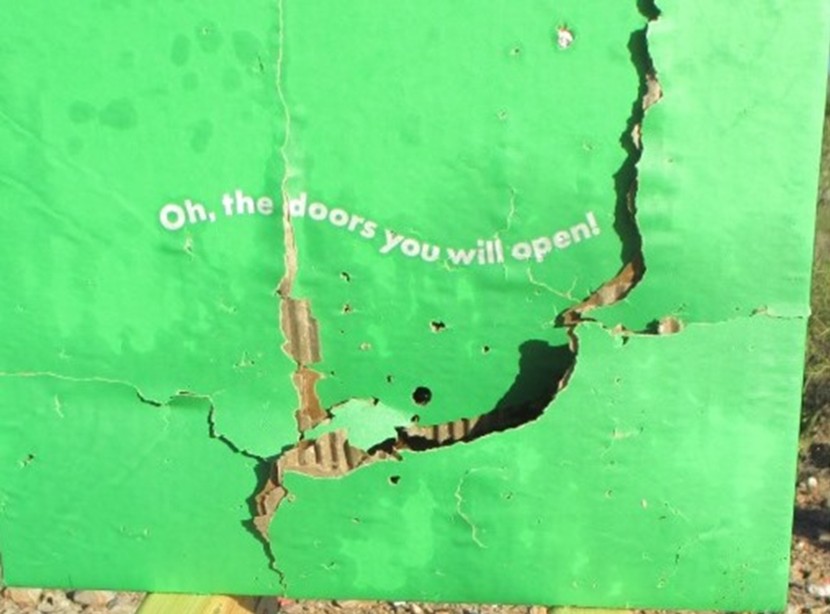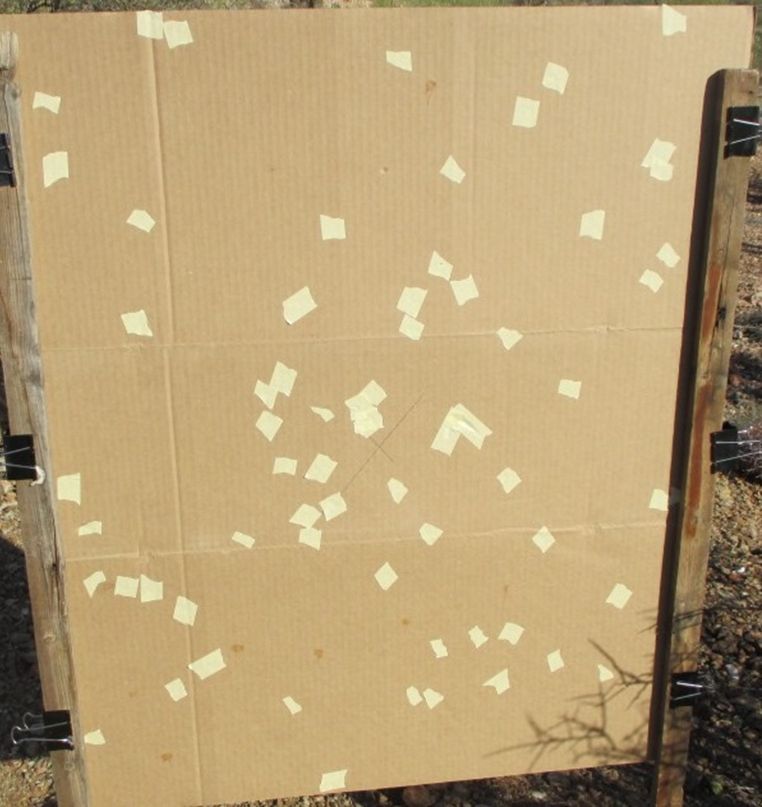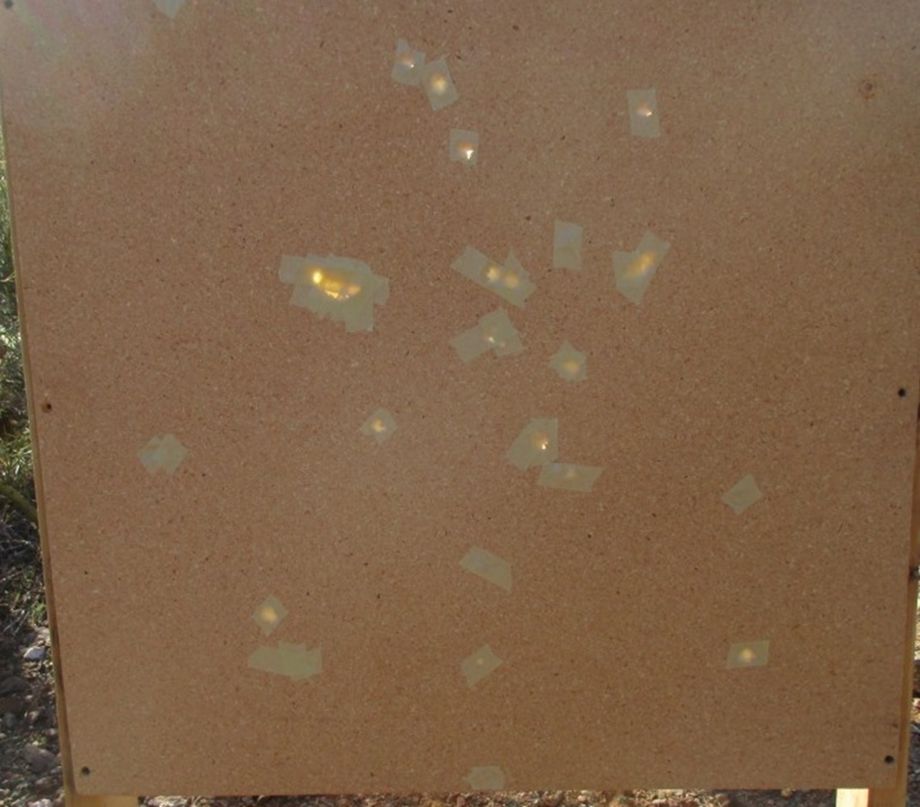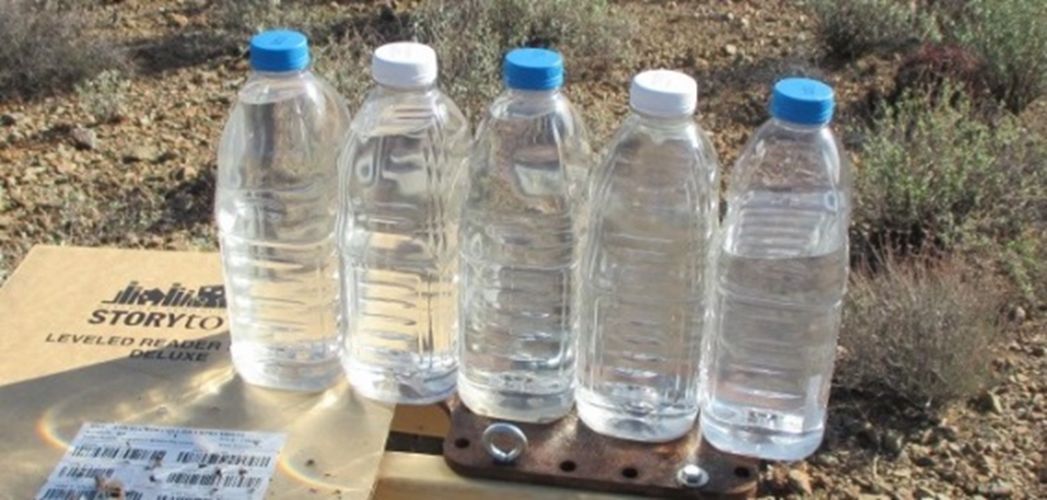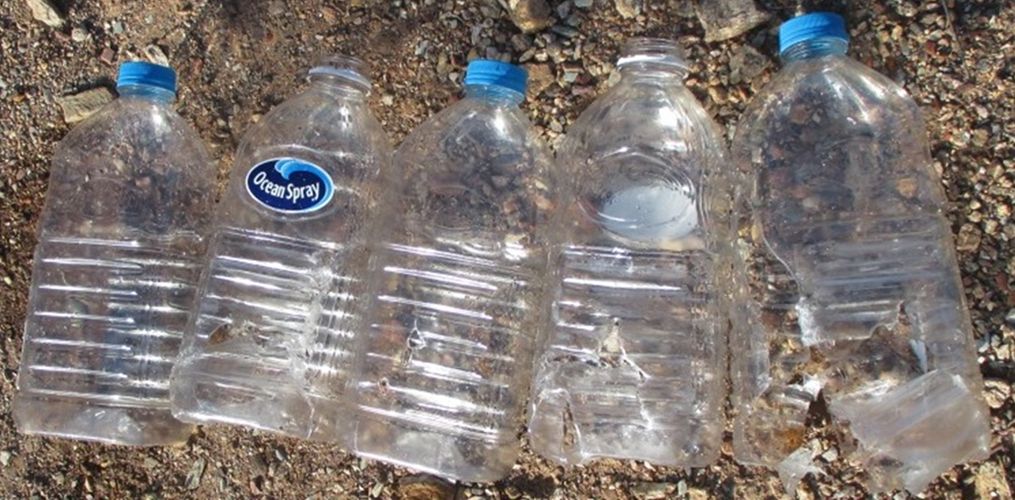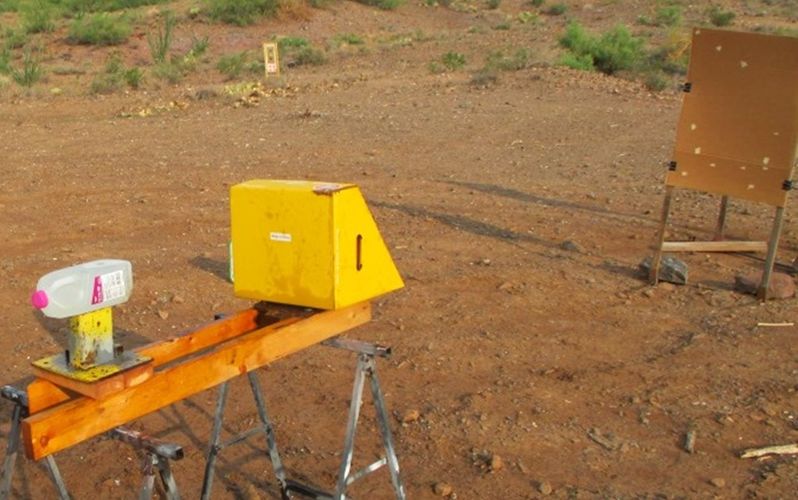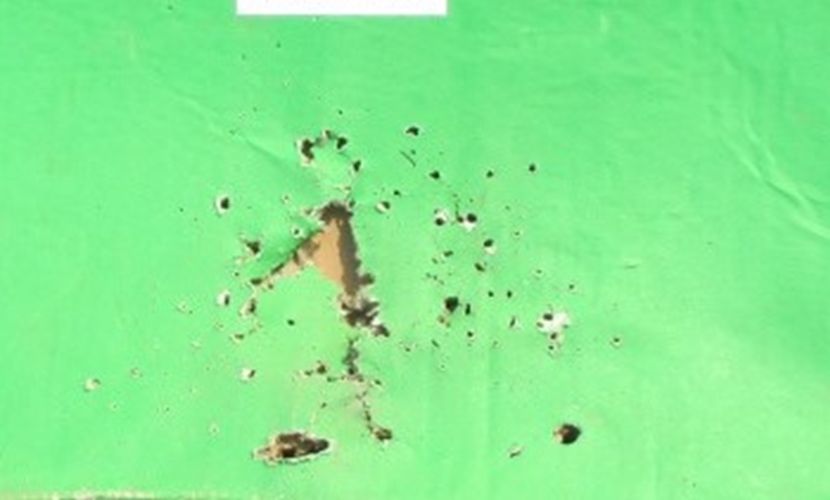
| Articles | Documents | Equipment | Events | Links | Membership | Miscellaneous | Scrapbook | Targets | What's New |
| Know your Target, and What’s Beyond | November 2018 | |||||||||||||||||
| Gerhard Schroeder
| ||||||||||||||||||
|
We all (should) know that safety rule prior to firing a weapon. Especially a high-power
rifle. It even more applies to hunters in Germany, with its high population density.
Totally understandable, then, that my friend Edmund had asked if I knew of a ‘good’
varmint projectile for the 308 Winchester. The performance he is looking for boils down
to this: a bullet that does not cause concern of harming anything beyond the target if
fired at something like a fox, or crow sitting on the ground.
Game on!
We agreed on a comparison test by simply shooting through water-filled bottles and
capturing whatever the bullets did via a large cardboard a few steps behind the bottle.
So then, here are …
The Contenders
First step – a quick accuracy test
All ammo was assembled with 48gr of H335, except the 108 Barnes with their .310 dia.
Test rifle was a Mossberg MVP with 18.5” barrel. The Sabot load immediately
disqualified itself. I know of shotguns which keep stuff tighter when fired at 50
steps. The Hornady 100 SJ also disappointed with a pattern of over 6 inches. All
others did better than 1 ¼ inches. I did not dare shoot the sabots at my Chrony,
and for whatever reason the Sierra RNs did not trigger a readout. All but one
clocked around 3000 fps. The Lapua 100gr leaped out at 3070fps. NOTE: when loading
these Lapuas do not use maximum loads shown in manuals for 110 grainers. These
bullets apparently generate higher pressures.
Step 2: the bottles
The plastic bottles stood 35 steps away. The (here white, later also green, red
and yellow) cardboard box placed close to the bottle functioned as spray cover/
splash shield so the brown witness cardboard, 8 steps behind) would remain mostly
dry, and allow tape to adhere. The bottles had a diameter of 3.5 inches.
For comparison my first shot at a bottle came from a 243 Winchester, loaded with
58gr Barnes Varminator. Did not measure its velocity, but per book should have
been around 3700 fps. As expected, the bottle exploded, turned inside-out. The
splash shield blew off the stand. And absolutely nothing penetrated the (witness)
cardboard. I took a second shot with the 243. This time one small bullet fragment
penetrated the cardboard.
Switching to the 308 Win, the first to test was the Lapua CEHP, with much
encouragement because nothing hit the cardboard. Unfortunately, the second shot
acted more like an FMJ. There was one caliber-size hole in the cardboard, and the
bottle showed less damage. Hence, the Lapua was disqualified. Here are the other
results, each time for one shot:
Sierra 110 RN: 7 holes in cardboard, one about caliber size
Then I had to decide how to use the last two bottles I had that day. I opted for
the Vmax since it had demonstrated the most disintegration.
110 Vmax, 2nd shot: 11 holes, one caliber size, plus dust
Step 3- ricochets
With the cardboard again at 35 paces, I stood on top of my shooting bench and fired
into the ground approximately 4 steps in front of the cardboard. Only the Vmax went
to this test.
With harder sand, where we typically drive at our desert shooting location, the first
shot resulted in two about caliber-size holes. Nothing penetrated the cardboard from
shot #2 and #3.
So far so good. And how much energy do those bullet fragments have? On another day
I enhanced the test setup by placing a ¼" thick particle board behind the cardboard.
Second group of contenders
Again the bottles stood at 35 steps. Here shown the red splash protection box after
several shots / blown up bottles. Cardboard was 6 steps behind the bottle, and two
steps behind that the particle board.
17+5 bottles were on hand. 15 fell to the Vmax. Results were mixed. Shot #2 looked
like FMJ performance, zipped clean through, and nothing reached cardboard or wood
for shot #3. Overall, the Vmax showed good bullet disintegration. After 11 shots a
new splash box was needed.
Shot #7 and #8 fired the Barnes 150gr Multi Purpose Green (MPG). It is a lead-free
design, hollow point without boattail. With the resistance of only one bottle they
acted like FMJs – see pictures.
Here the result summary:
C- caliber size
This is what the witness cardboard and particle board looked like after all 17
shots. The ‘pattern’ of all fragments through the cardboard demonstrates very
good bullet disintegration. And most did not penetrate the wooden board.
Then there were 5 other bottles on hand. The Barnes MPG got to take them all
on at once. Only one fragment penetrated the cardboard, but not the wood.
This result demanded a third day of testing, after more bottles were gathered.
Test Setup
At first I fired the 110Vmax again. After 7 shots not a single bullet
fragment had reached the witness cardboard. Interestingly, two small jacket
fragments were stuck in the yellow blast box. It appears that those 110grain
Vmax come completely apart within about 11 inches of “body”.
Next came the 108gr Barnes MPG, with a total of 12 shots. After 11 again
nothing had reached the cardboard. The 12th bullet did cause a very small fragment
penetration, but nothing in the particle board.
The 150gr Barnes MPG told a different story. The first shot ripped 4 about
caliber-sized holes through cardboard and wood plate. Shot #2 behaved more like
the folks from Barnes may have intended. But it still left an almost caliber-sized
hole in the particle board. That was the end of testing for me.
Bottom Line: 110Vmax seem a good way to go if we don’t want them to travel past
the intended target. And the 108 MPG could be a ‘green’ safe bullet.
OK, a 310 dia projectile in a 308 Win??? Yep, have done it about a thousand times,
back when somebody offered Russian 123gr Hollow points for very cheap. BUT, only
with a slightly reduced load, and always with RL15. There were never any signs of
high pressure or sticky bolt lift. And wouldn’t you know, they were more accurate
than the 110gr 308 dia options.
| ||||||||||||||||||
| If you enjoyed this story, or found it useful, please consider clicking here to join the NRA at a discount of $15 off the normal membership cost. You will be supporting both this website and adding your voice in support of the Second Amendment. Thank you very much. |

|

|
|
